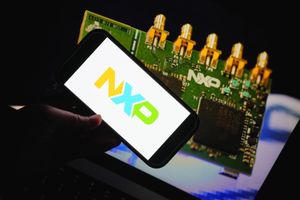
Electrical and electronic products company Hubbell (NYSE: HUBB) missed Wall Street’s revenue expectations in Q4 CY2024, with sales flat year on year at $1.33 billion. Its non-GAAP profit of $4.10 per share was 2.1% above analysts’ consensus estimates.
Is now the time to buy Hubbell? Find out by accessing our full research report, it’s free.
Hubbell (HUBB) Q4 CY2024 Highlights:
- Revenue: $1.33 billion vs analyst estimates of $1.40 billion (flat year on year, 4.8% miss)
- Adjusted EPS: $4.10 vs analyst estimates of $4.02 (2.1% beat)
- Adjusted EBITDA: $311.4 million vs analyst estimates of $323.3 million (23.3% margin, 3.7% miss)
- Adjusted EPS guidance for the upcoming financial year 2025 is $17.60 at the midpoint, missing analyst estimates by 0.6%
- Operating Margin: 19.3%, up from 16.8% in the same quarter last year
- Free Cash Flow Margin: 32.4%, up from 21.1% in the same quarter last year
- Organic Revenue fell 3% year on year (7.6% in the same quarter last year)
- Market Capitalization: $21.94 billion
“Hubbell delivered double-digit growth in operating profit, earnings per share and free cash flow in the fourth quarter” said Gerben Bakker, Chairman, President and CEO.
Company Overview
A respected player in the electrical segment, Hubbell (NYSE: HUBB) manufactures electronic products for the construction, industrial, utility, and telecommunications markets.
Electrical Systems
Like many equipment and component manufacturers, electrical systems companies are buoyed by secular trends such as connectivity and industrial automation. More specific pockets of strong demand include Internet of Things (IoT) connectivity and the 5G telecom upgrade cycle, which can benefit companies whose cables and conduits fit those needs. But like the broader industrials sector, these companies are also at the whim of economic cycles. Interest rates, for example, can greatly impact projects that drive demand for these products.
Sales Growth
Reviewing a company’s long-term sales performance reveals insights into its quality. Any business can have short-term success, but a top-tier one grows for years. Unfortunately, Hubbell’s 4.2% annualized revenue growth over the last five years was sluggish. This fell short of our benchmark for the industrials sector, but there are still things to like about Hubbell.
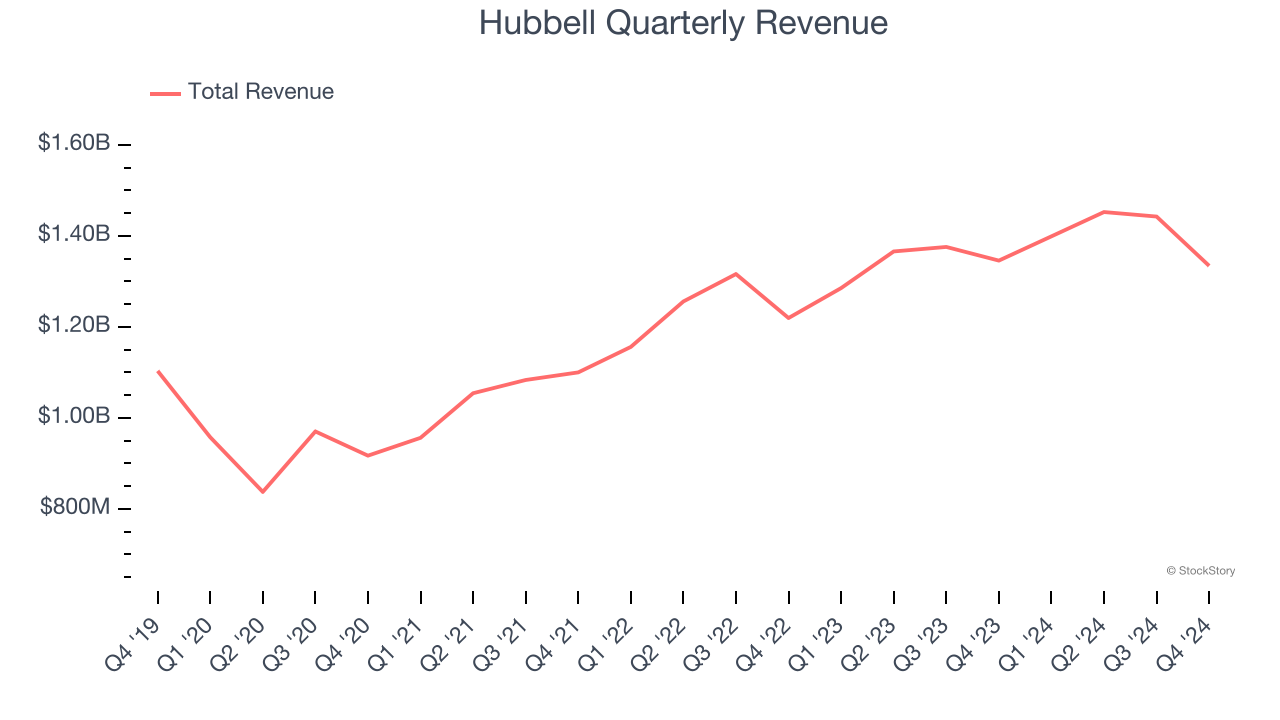
We at StockStory place the most emphasis on long-term growth, but within industrials, a half-decade historical view may miss cycles, industry trends, or a company capitalizing on catalysts such as a new contract win or a successful product line. Hubbell’s annualized revenue growth of 6.7% over the last two years is above its five-year trend, but we were still disappointed by the results. 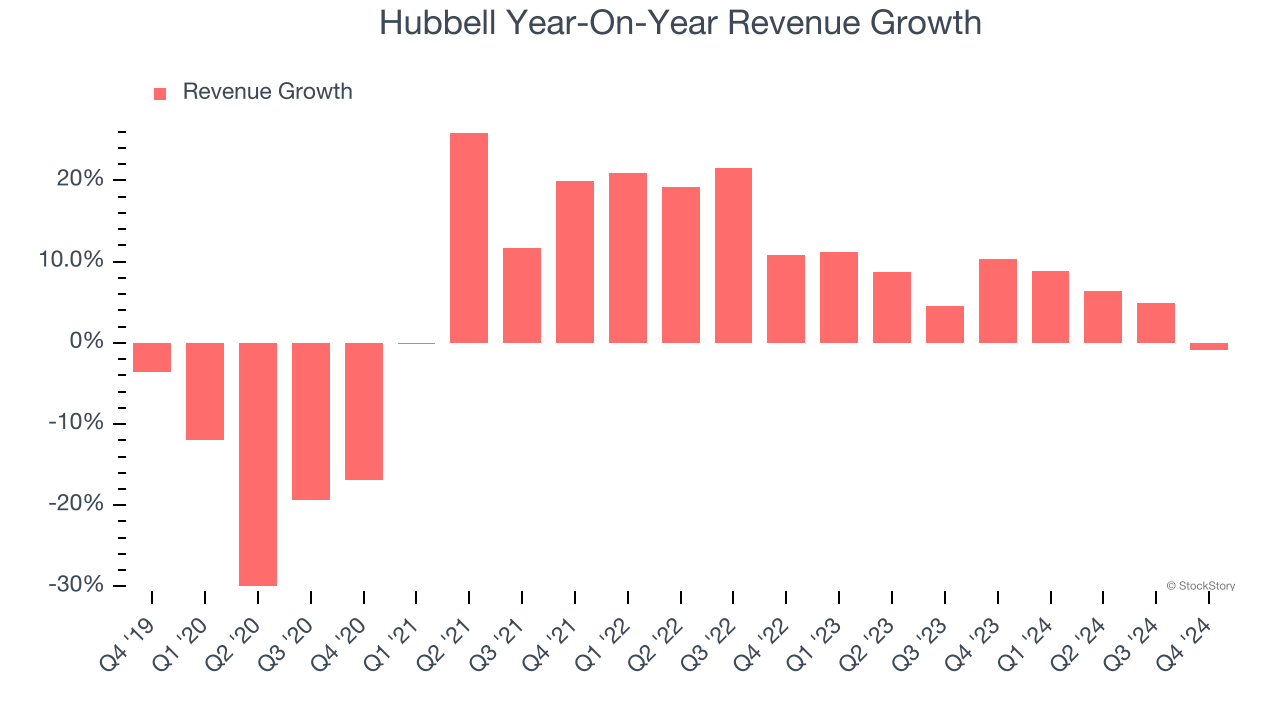
We can better understand the company’s sales dynamics by analyzing its organic revenue, which strips out one-time events like acquisitions and currency fluctuations because they don’t accurately reflect its fundamentals. Over the last two years, Hubbell’s organic revenue averaged 3.4% year-on-year growth. Because this number is lower than its normal revenue growth, we can see that some mixture of acquisitions and foreign exchange rates boosted its headline results. 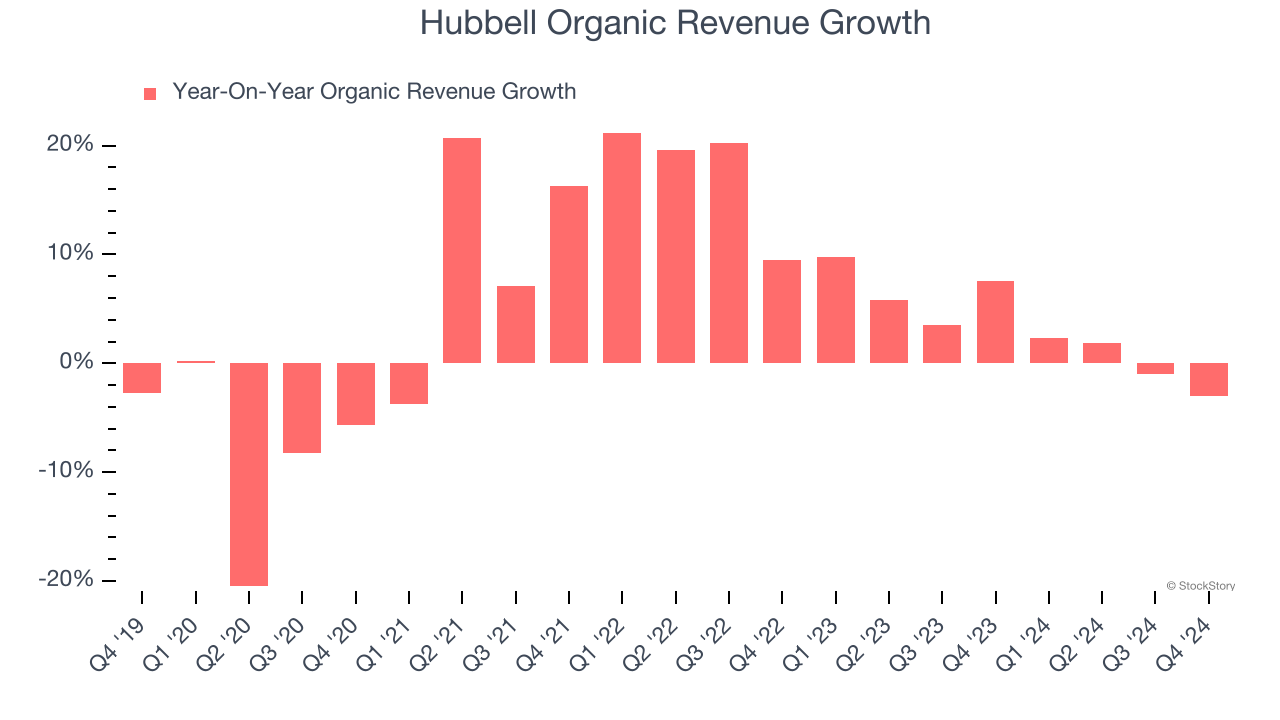
This quarter, Hubbell missed Wall Street’s estimates and reported a rather uninspiring 0.9% year-on-year revenue decline, generating $1.33 billion of revenue.
Looking ahead, sell-side analysts expect revenue to grow 6.2% over the next 12 months, similar to its two-year rate. This projection is underwhelming and indicates its newer products and services will not catalyze better top-line performance yet. At least the company is tracking well in other measures of financial health.
Here at StockStory, we certainly understand the potential of thematic investing. Diverse winners from Microsoft (MSFT) to Alphabet (GOOG), Coca-Cola (KO) to Monster Beverage (MNST) could all have been identified as promising growth stories with a megatrend driving the growth. So, in that spirit, we’ve identified a relatively under-the-radar profitable growth stock benefiting from the rise of AI, available to you FREE via this link.
Adjusted Operating Margin
Operating margin is an important measure of profitability as it shows the portion of revenue left after accounting for all core expenses – everything from the cost of goods sold to advertising and wages. It’s also useful for comparing profitability across companies with different levels of debt and tax rates because it excludes interest and taxes.
Hubbell has been a well-oiled machine over the last five years. It demonstrated elite profitability for an industrials business, boasting an average operating margin of 16.2%.
Looking at the trend in its profitability, Hubbell’s operating margin rose by 6 percentage points over the last five years, showing its efficiency has meaningfully improved.
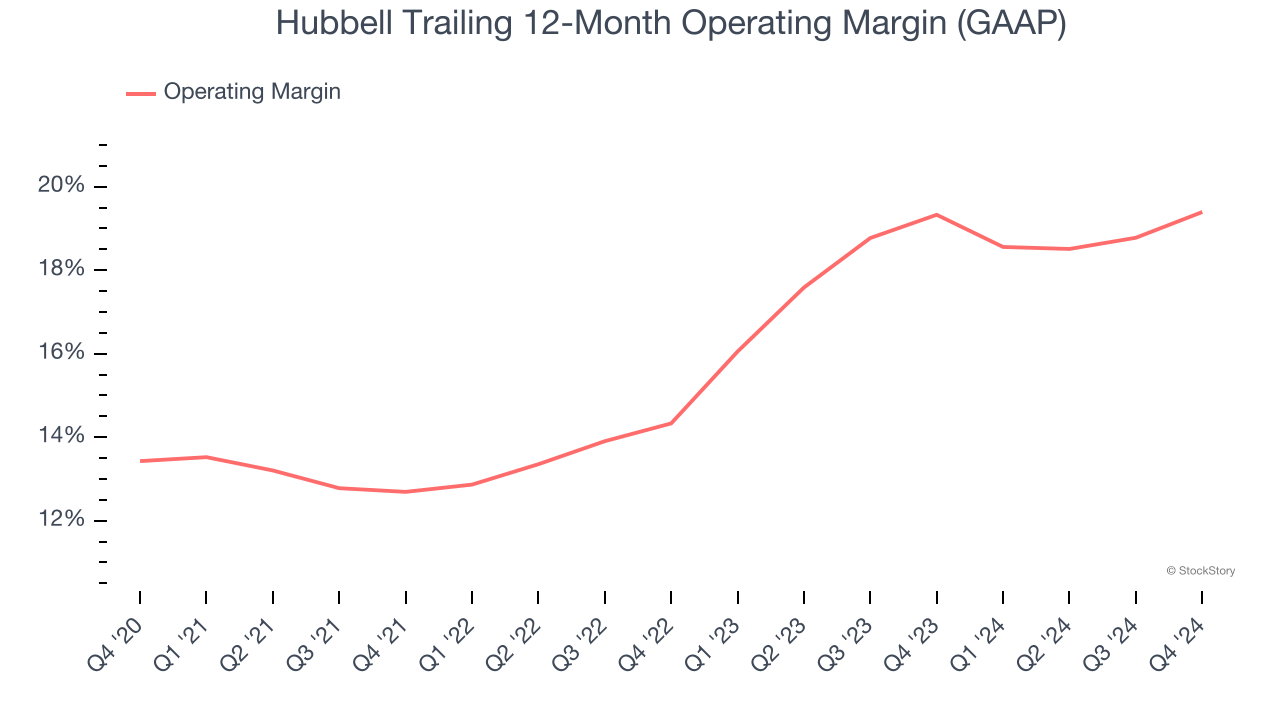
This quarter, Hubbell generated an operating profit margin of 19.3%, up 2.6 percentage points year on year. The increase was encouraging, and since its operating margin rose more than its gross margin, we can infer it was recently more efficient with expenses such as marketing, R&D, and administrative overhead.
Earnings Per Share
Revenue trends explain a company’s historical growth, but the long-term change in earnings per share (EPS) points to the profitability of that growth – for example, a company could inflate its sales through excessive spending on advertising and promotions.
Hubbell’s EPS grew at a spectacular 15.3% compounded annual growth rate over the last five years, higher than its 4.2% annualized revenue growth. This tells us the company became more profitable on a per-share basis as it expanded.
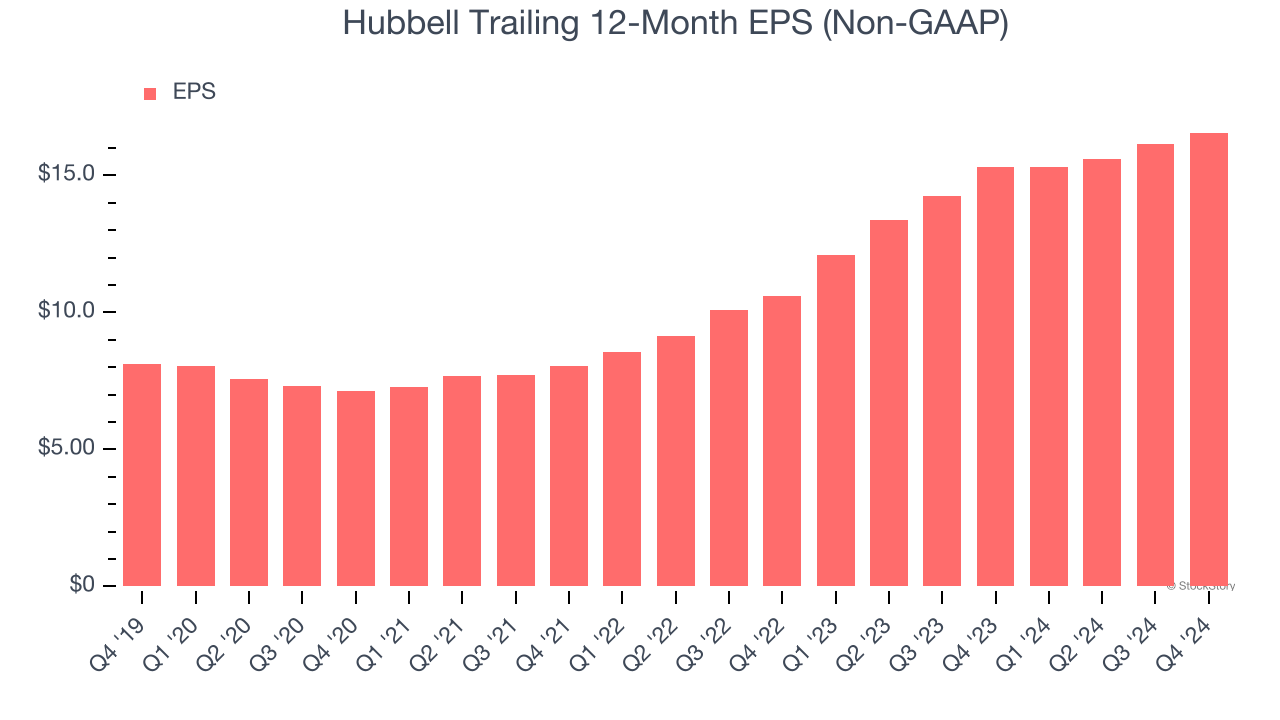
We can take a deeper look into Hubbell’s earnings quality to better understand the drivers of its performance. As we mentioned earlier, Hubbell’s operating margin expanded by 6 percentage points over the last five years. On top of that, its share count shrank by 1.3%. These are positive signs for shareholders because improving profitability and share buybacks turbocharge EPS growth relative to revenue growth. 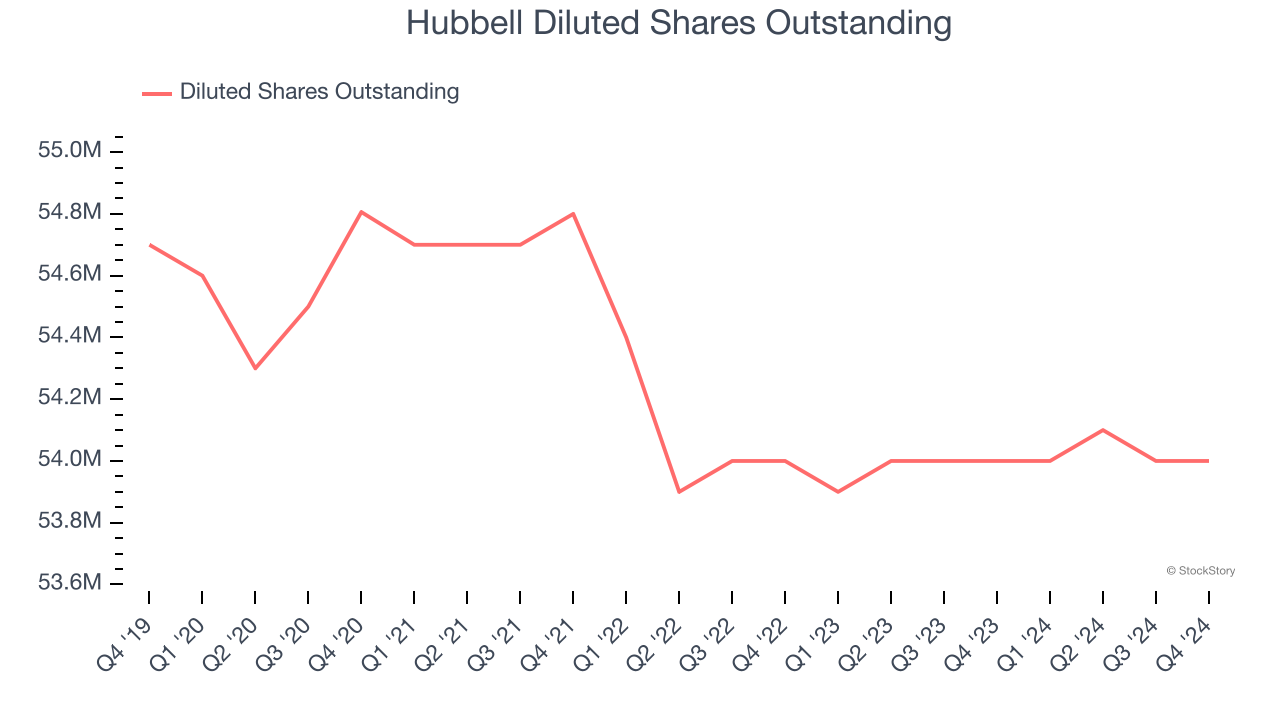
Like with revenue, we analyze EPS over a shorter period to see if we are missing a change in the business.
For Hubbell, its two-year annual EPS growth of 24.9% was higher than its five-year trend. We love it when earnings growth accelerates, especially when it accelerates off an already high base.
In Q4, Hubbell reported EPS at $4.10, up from $3.69 in the same quarter last year. This print beat analysts’ estimates by 2.1%. Over the next 12 months, Wall Street expects Hubbell’s full-year EPS of $16.56 to grow 7%.
Key Takeaways from Hubbell’s Q4 Results
We struggled to find many resounding positives in these results. Its revenue missed significantly and its organic revenue fell short of Wall Street’s estimates. Overall, this was a weaker quarter. The stock traded down 1.6% to $401.70 immediately following the results.
Hubbell didn’t show it’s best hand this quarter, but does that create an opportunity to buy the stock right now? We think that the latest quarter is only one piece of the longer-term business quality puzzle. Quality, when combined with valuation, can help determine if the stock is a buy. We cover that in our actionable full research report which you can read here, it’s free.



